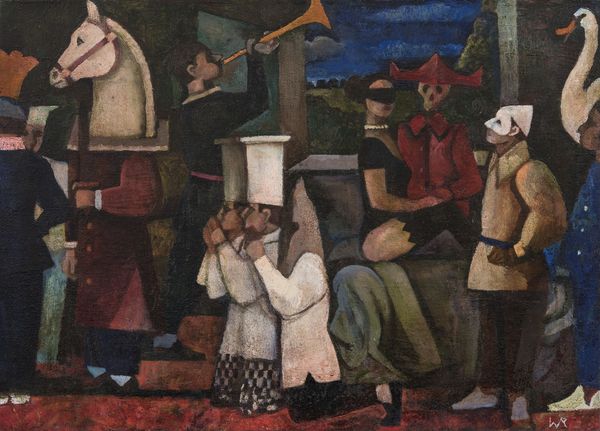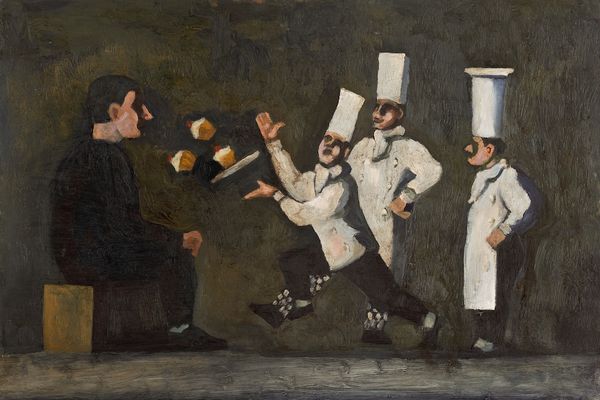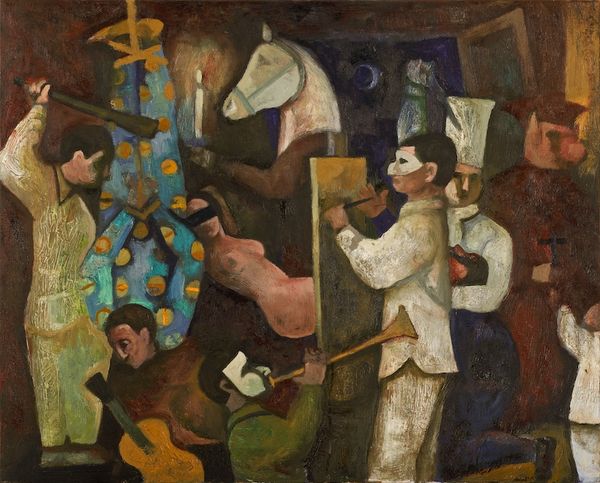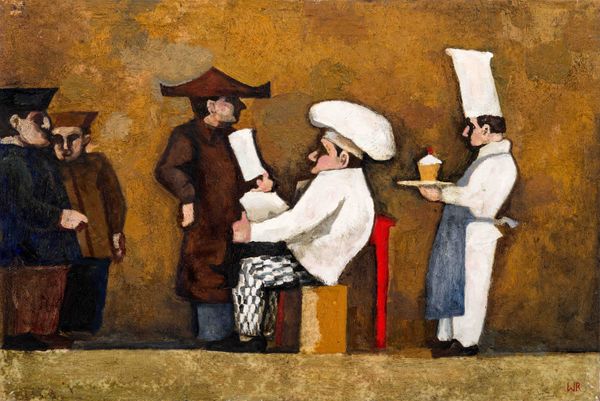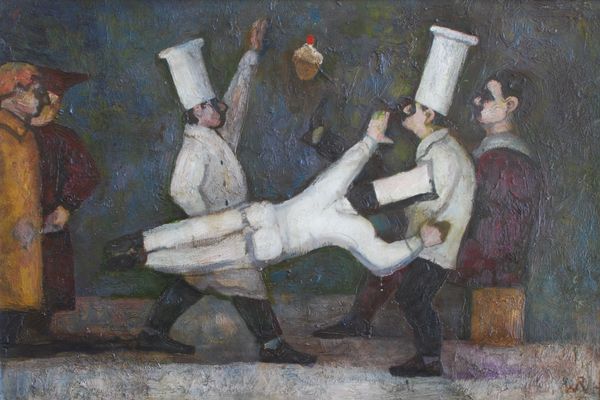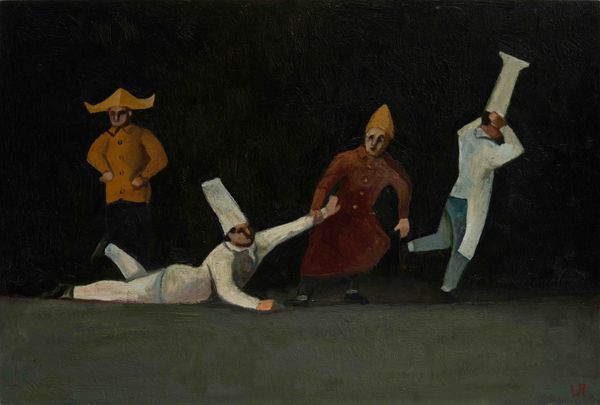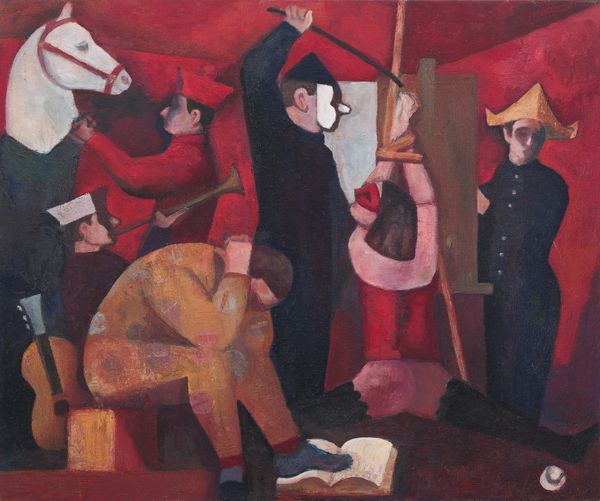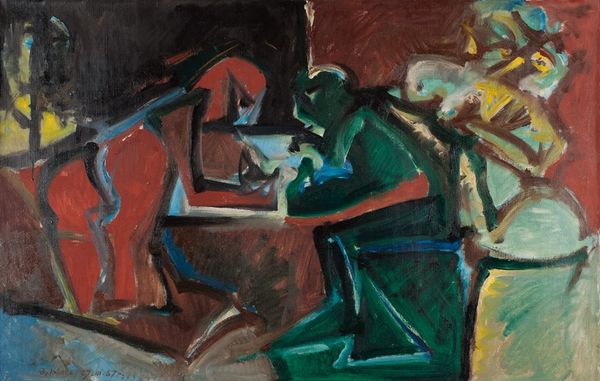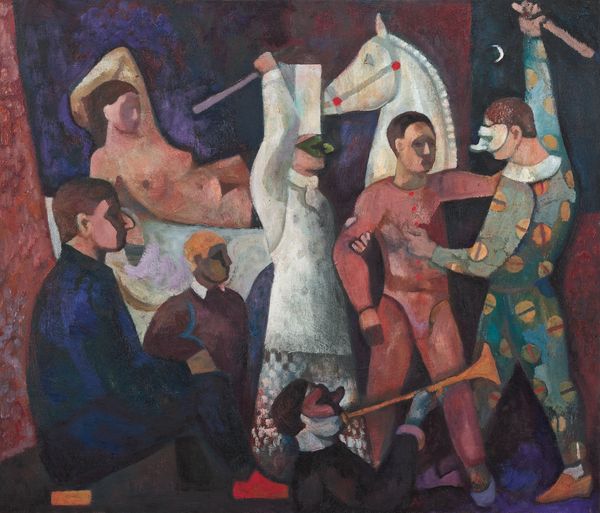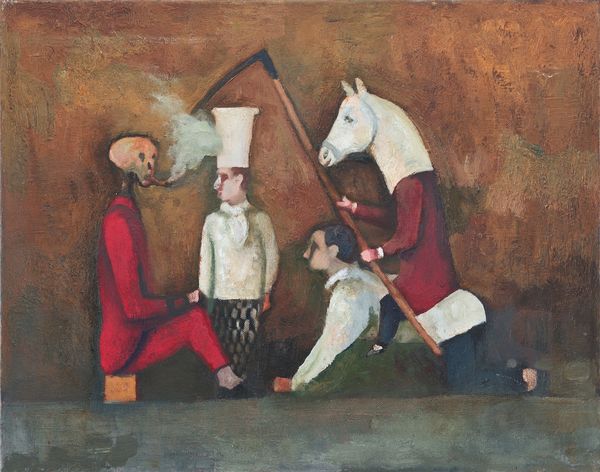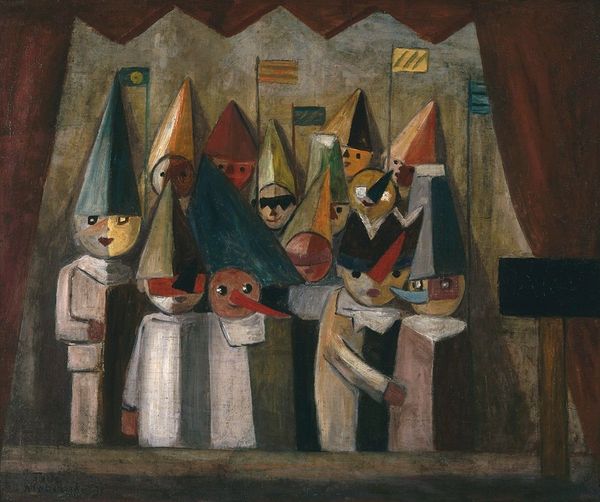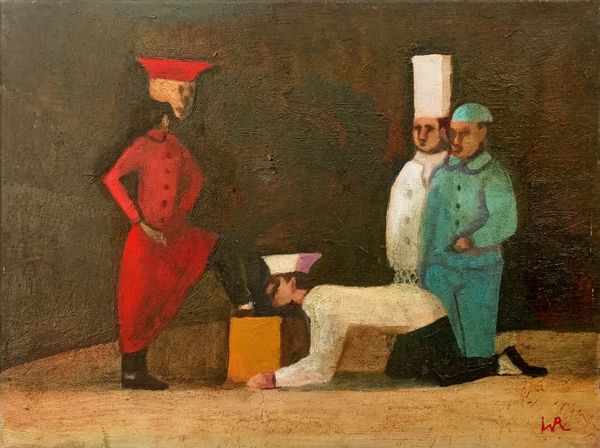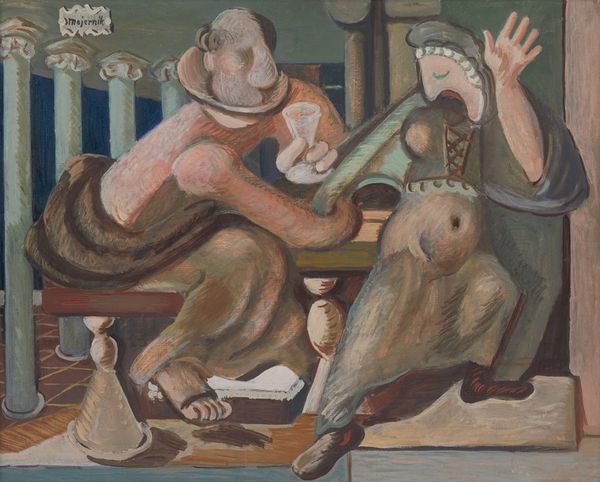
#
acrylic
#
sculpture
#
painted
#
possibly oil pastel
#
oil painting
#
unrealistic statue
#
acrylic on canvas
#
underpainting
#
painting painterly
#
watercolor
Dimensions: 40 x 60 cm
Copyright: Reproduction by permission of the artist
Editor: Here we have William Balthazar Rose’s 2011 acrylic painting, "No Where to Go." The composition is... strange, unsettling even. We have this figure in the foreground just sitting, seemingly observing some cooks who are going about their business, not paying him any mind. How do you interpret this work? Curator: It is unsettling, isn’t it? Rose here stages a compelling tableau vivant. Who holds the power here, and how is it visually expressed? The cooks, in their clean whites and hats, evoke a professional class, perhaps even a ruling elite, while the seated figure appears more vulnerable. This dynamic speaks volumes about social hierarchies. What institutions or power structures might Rose be critiquing? Editor: It's interesting you bring up power dynamics. At first glance, the seated figure seemed most vulnerable, but is there a case to be made for his deliberate inaction? Is he protesting by not participating? Curator: Precisely! Consider the political implications of passivity, of opting out. In what socio-political contexts does refusal become a powerful tool? The dark palette and the almost dreamlike staging heighten the sense of unease, underscoring the stakes of such a refusal. Does the setting - the "no where" suggested by the title - amplify this feeling of existential angst? Editor: Definitely. It makes me think of political protests where simply showing up and occupying space is the statement. But the cooks, seemingly oblivious, create a kind of apathetic echo chamber. I wonder if their uniformity and shared purpose emphasize conformity and control. Curator: Yes, think of propaganda imagery – the ways in which collective action, often depicted through uniforms and repetitive gestures, serves to consolidate authority. What narratives do museums, for instance, construct through the strategic display of such imagery? Rose challenges us to question such visual strategies. Editor: It makes you think about who art is *for*, doesn’t it? All these subtle choices – the composition, the subjects… I hadn't initially considered it so politically charged! Curator: Art serves the artist, first, of course! Then the community. It's our job, as observers, to unpack these layers. This reminds me that power is rarely absolute, it is continuously negotiated and contested, even in silence. Editor: Thank you. Now, looking at it again, there's such a layered narrative at play that I completely missed at first!
Comments
No comments
Be the first to comment and join the conversation on the ultimate creative platform.
